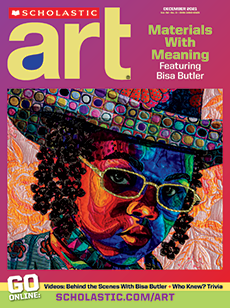Tony Vaccaro/Hulton Archive/Getty Images.
Lee Krasner
Her birth name was Lena. She went by Lenore in high school. But if you’ve heard of her, you’ll know her as Lee. Some art historians believe Lee Krasner adopted the gender-neutral name Lee to combat the gender bias she faced in the art world.
If you haven’t heard of Krasner, you’ve probably heard of her husband, Jackson Pollock. The two artists were married for 11 years, influencing one another’s work along the way. But Krasner was an artist before she met Pollock and continued painting for almost 30 years after he died. As Pollock achieved international fame, Krasner quietly explored new directions in her work, ensuring a space for herself in art’s long history.
Lee Krasner was an Abstract Expressionist painter. Her birth name was Lena. She went by Lenore in high school. But for her art career, she chose the name Lee. Some historians believe she did this so that when people saw her name on paper, they wouldn’t know she was a woman right away. It wasn’t easy being a woman in the art world at the time.
Krasner was married to famous painter Jackson Pollock for 11 years. The two artists influenced each other’s work. Pollock became much more famous than Krasner. But Krasner’s role in Abstract Expressionism was just as important as her husband’s.
